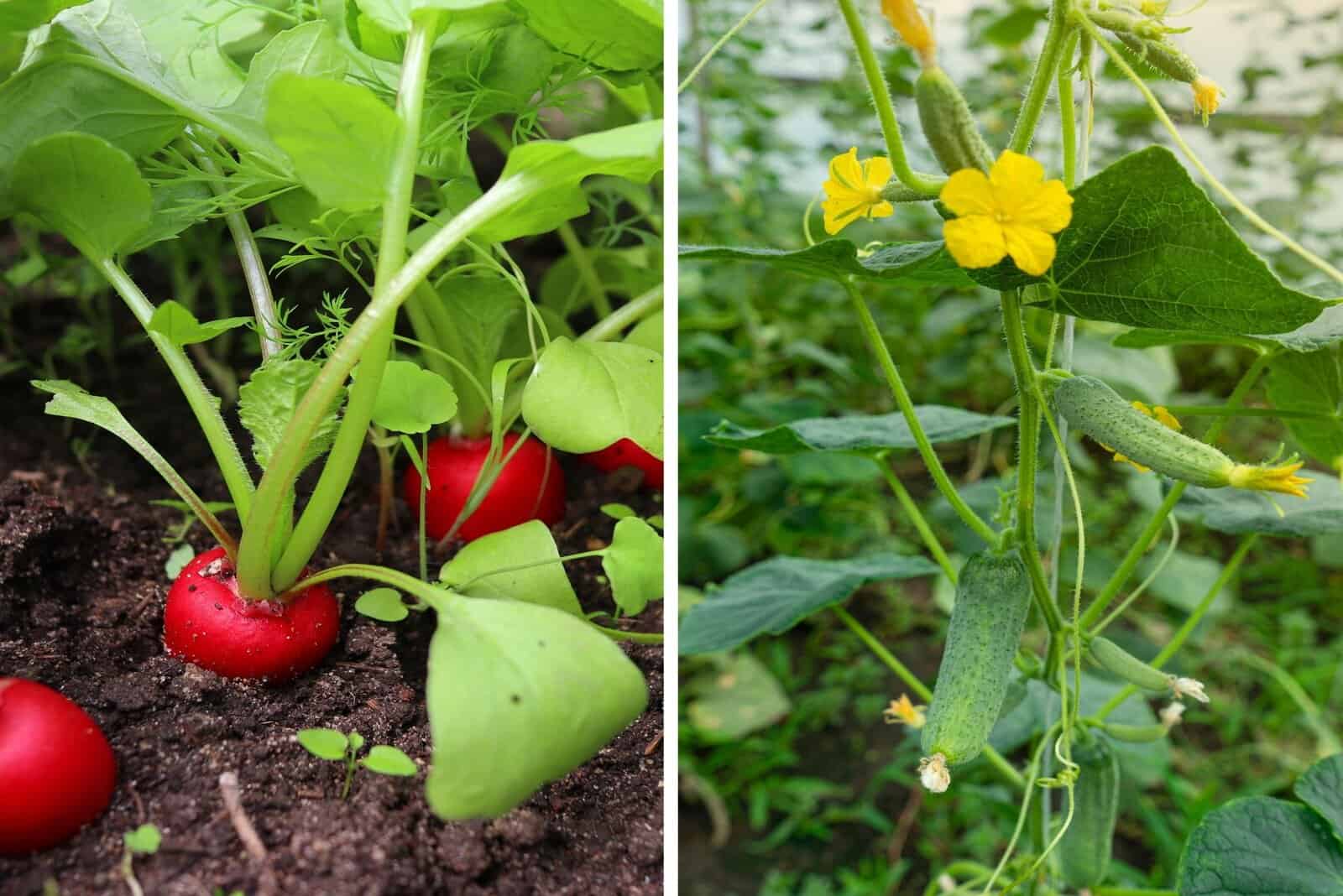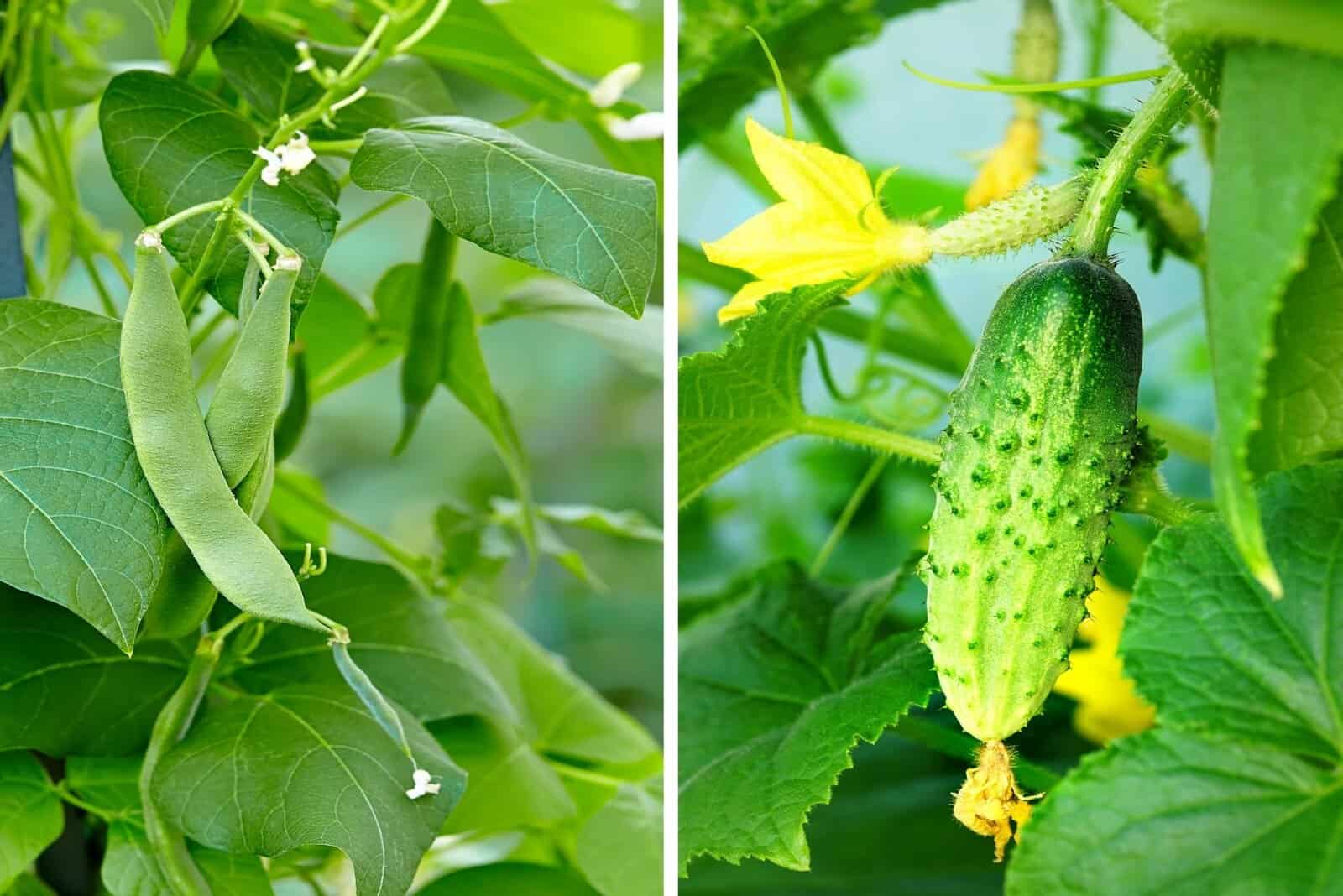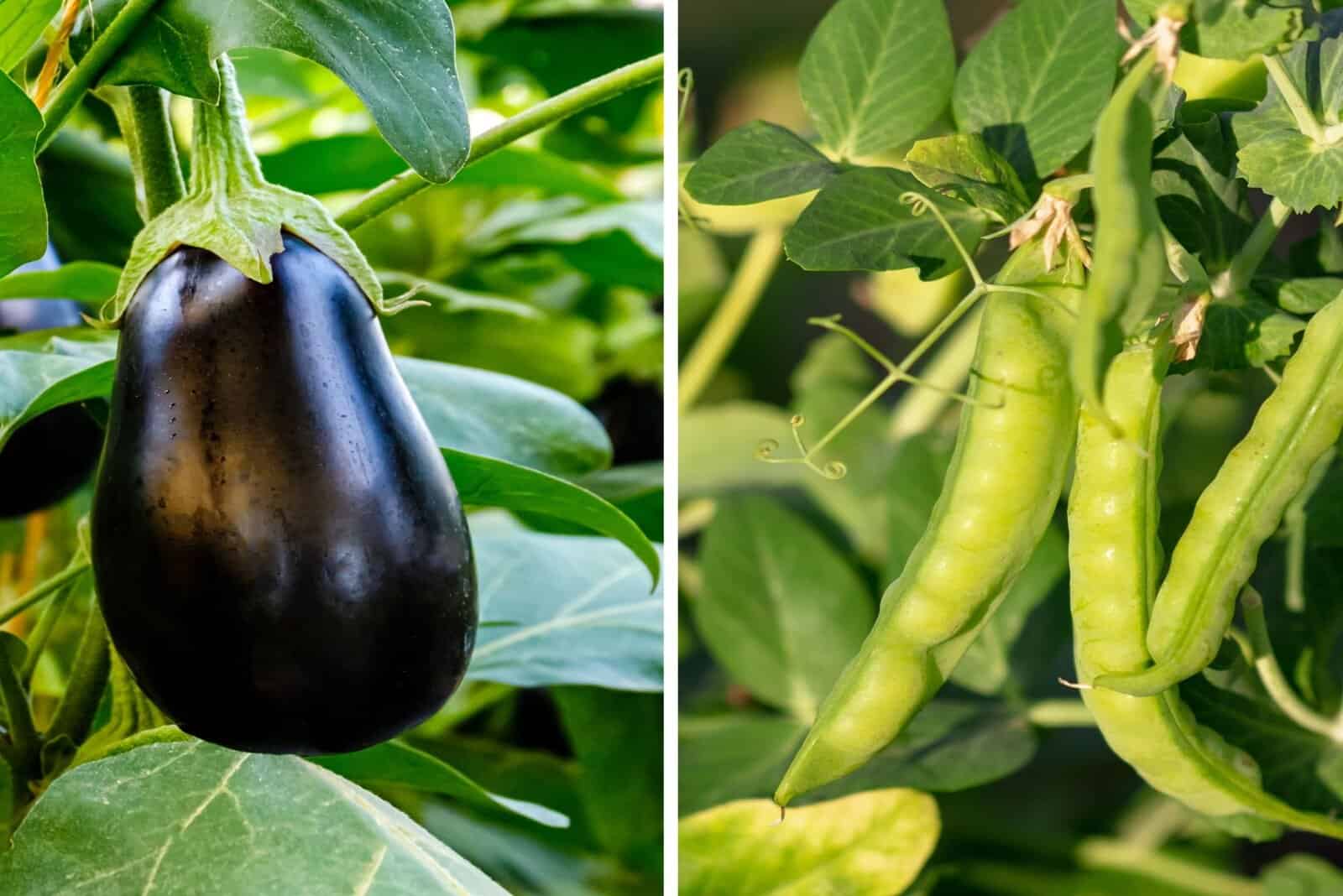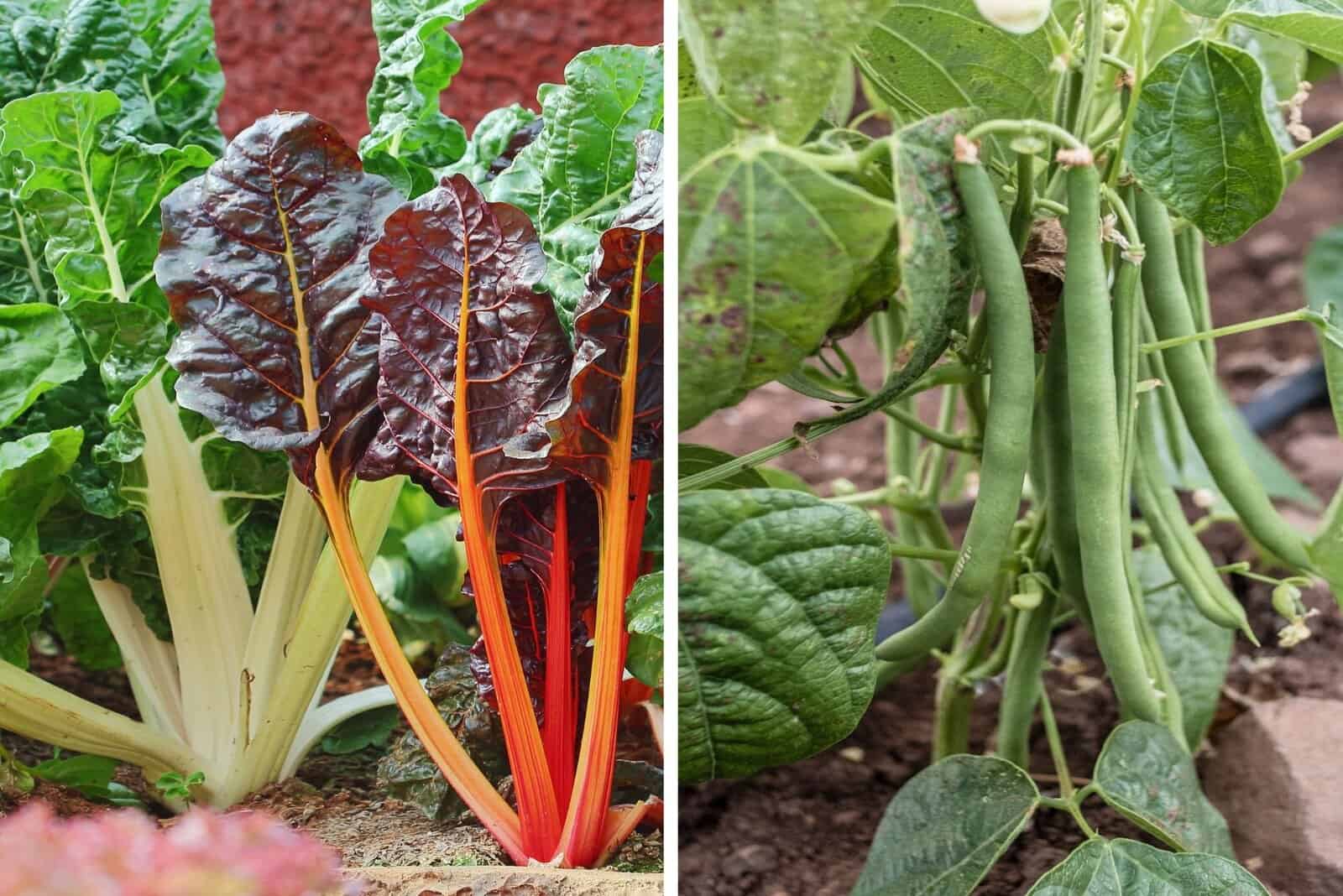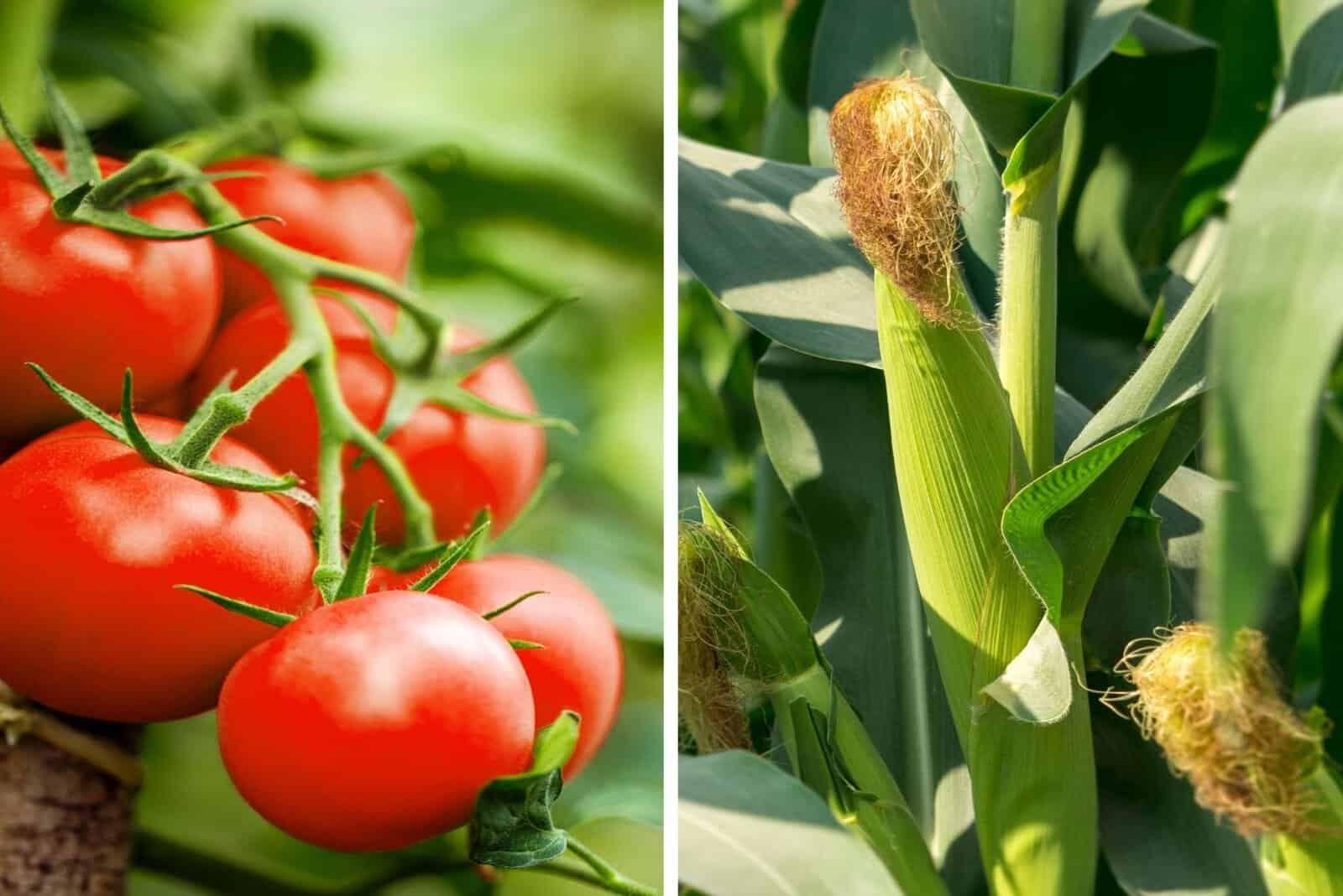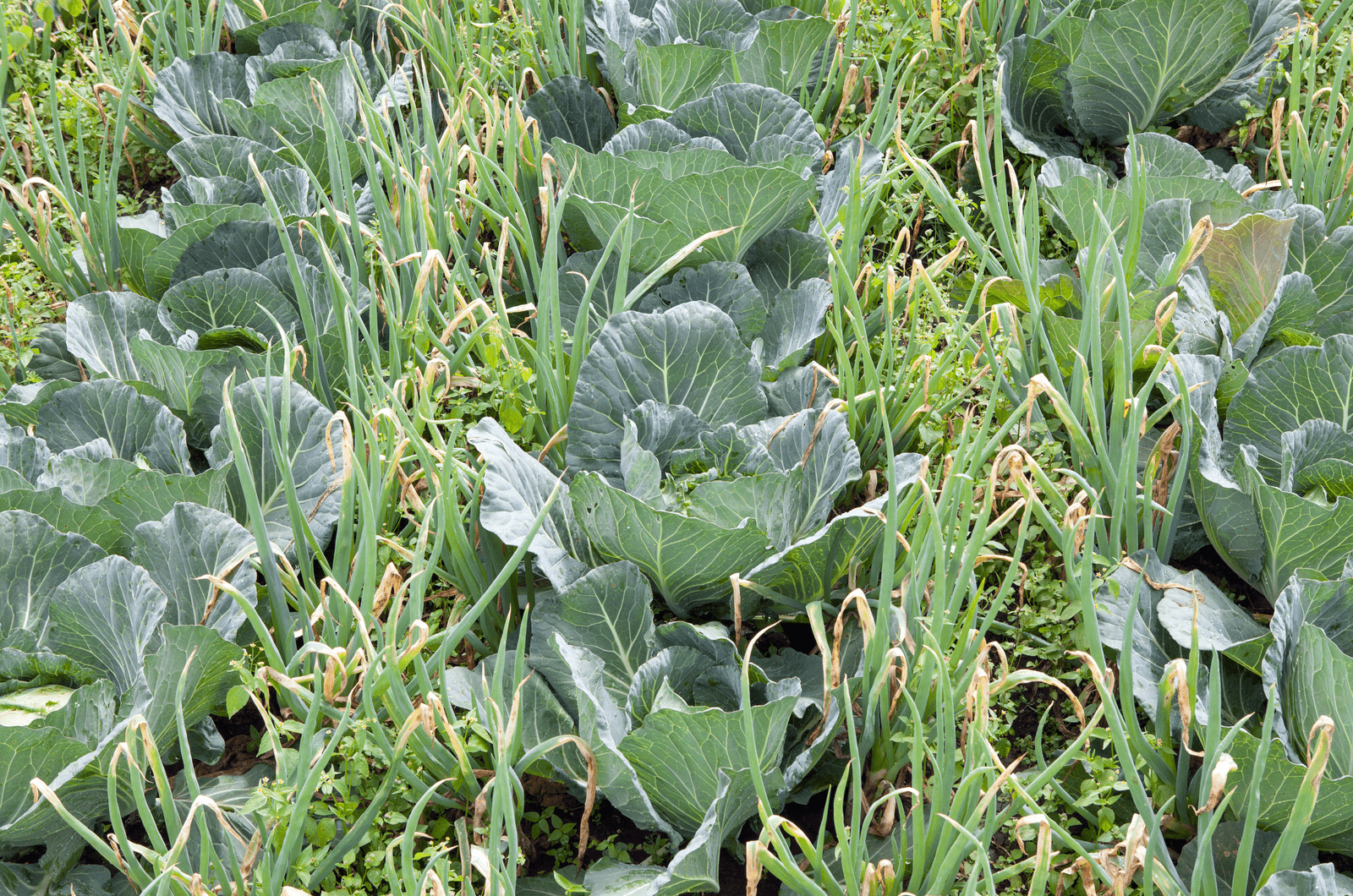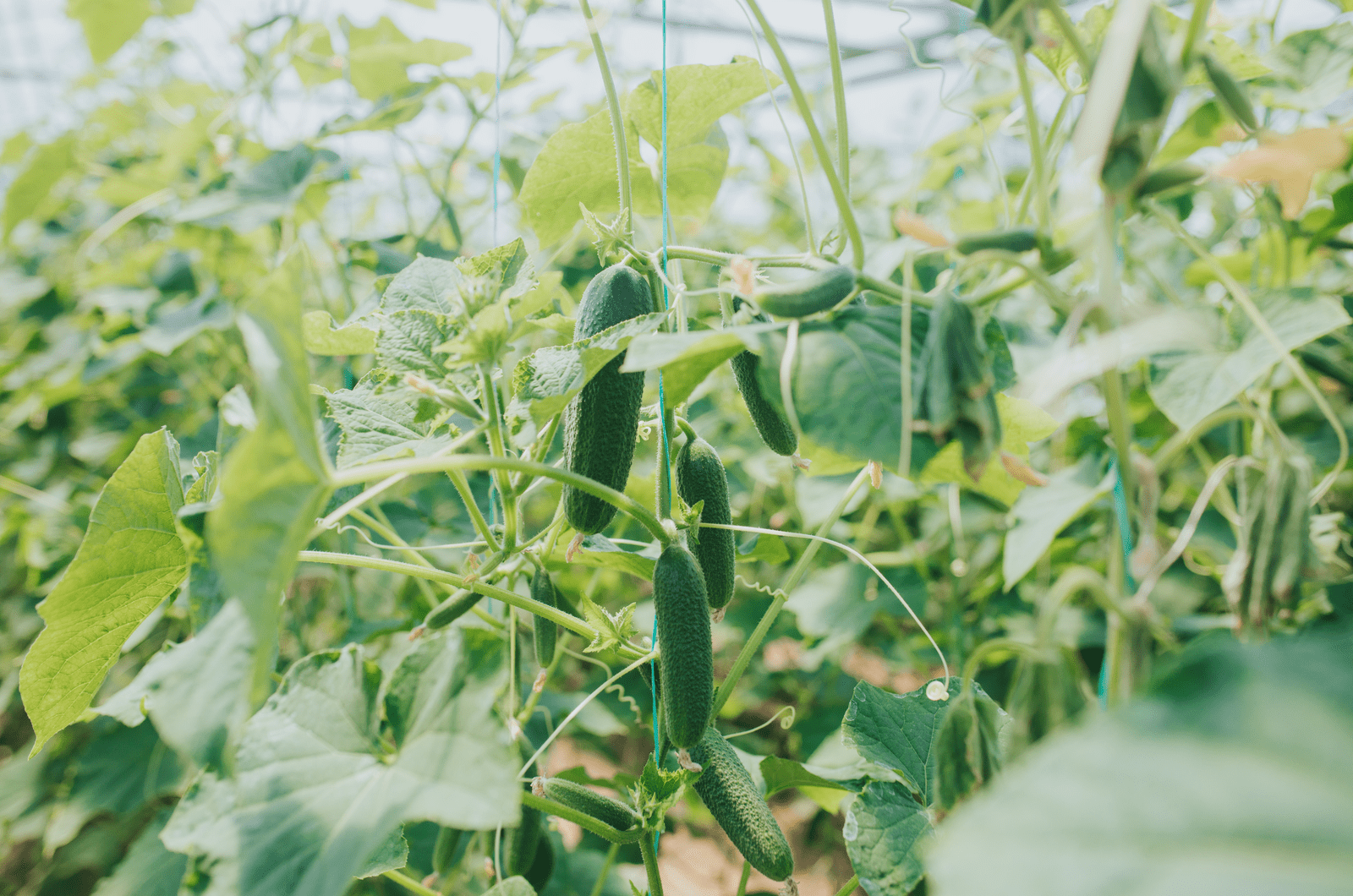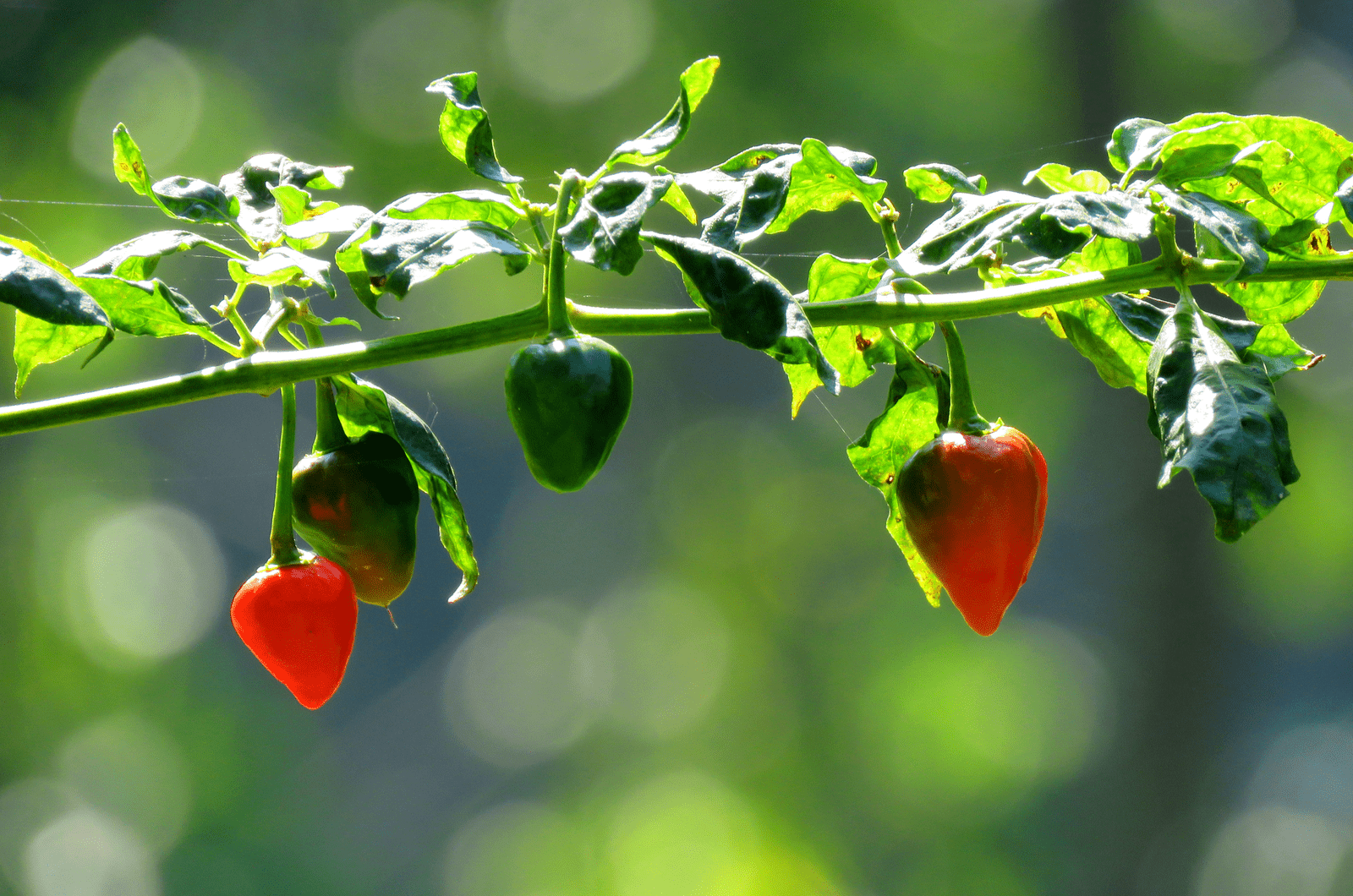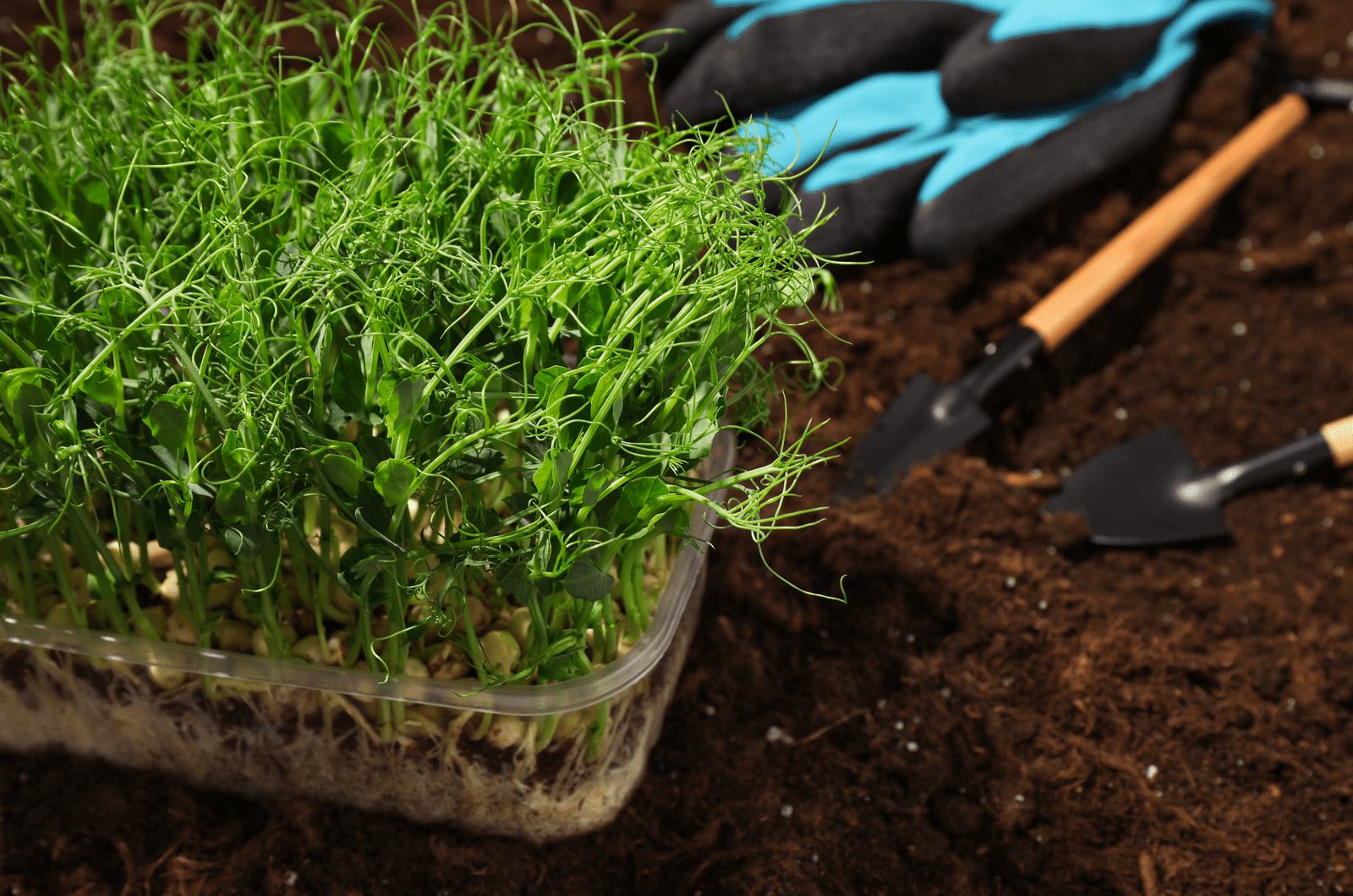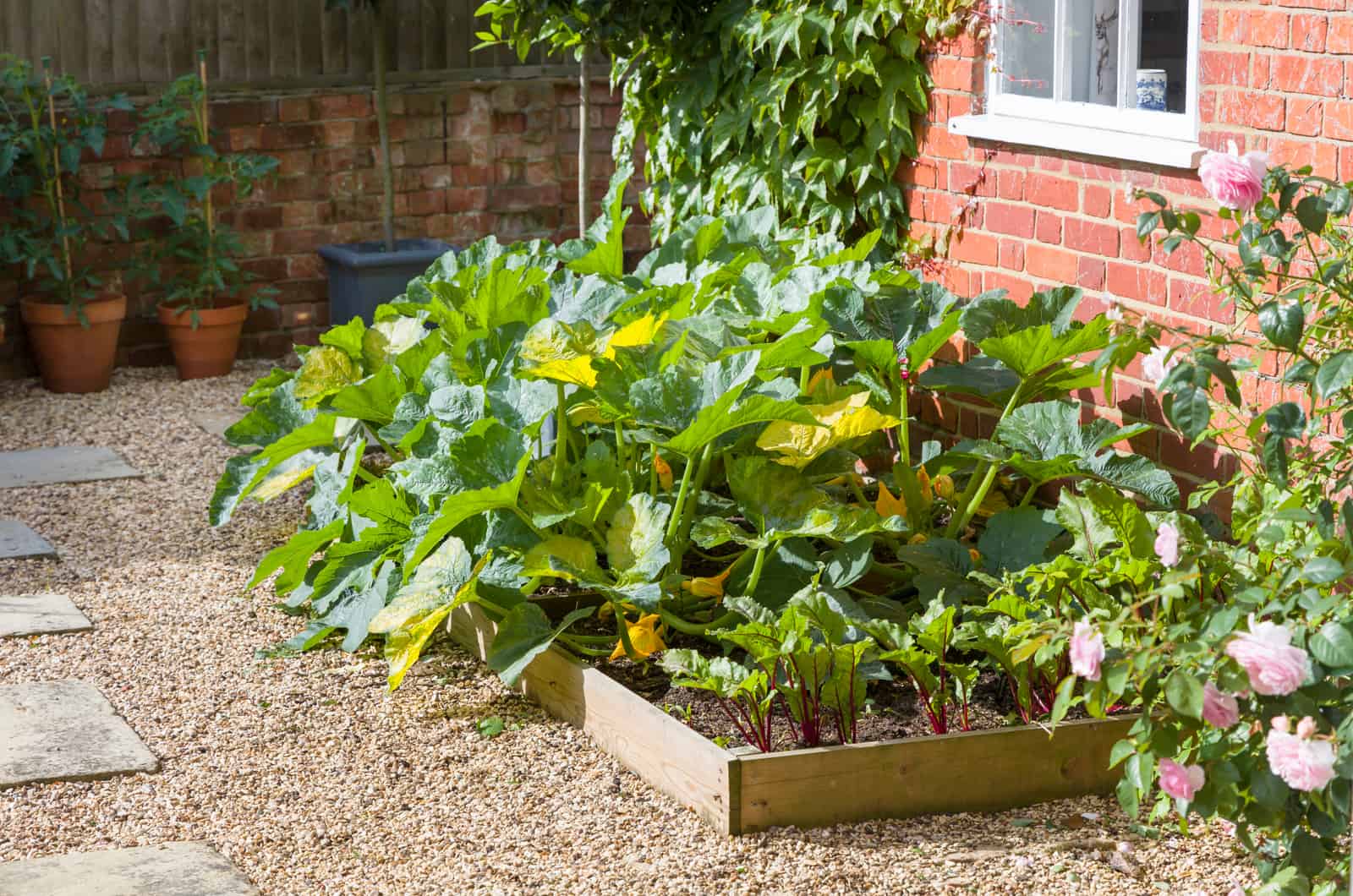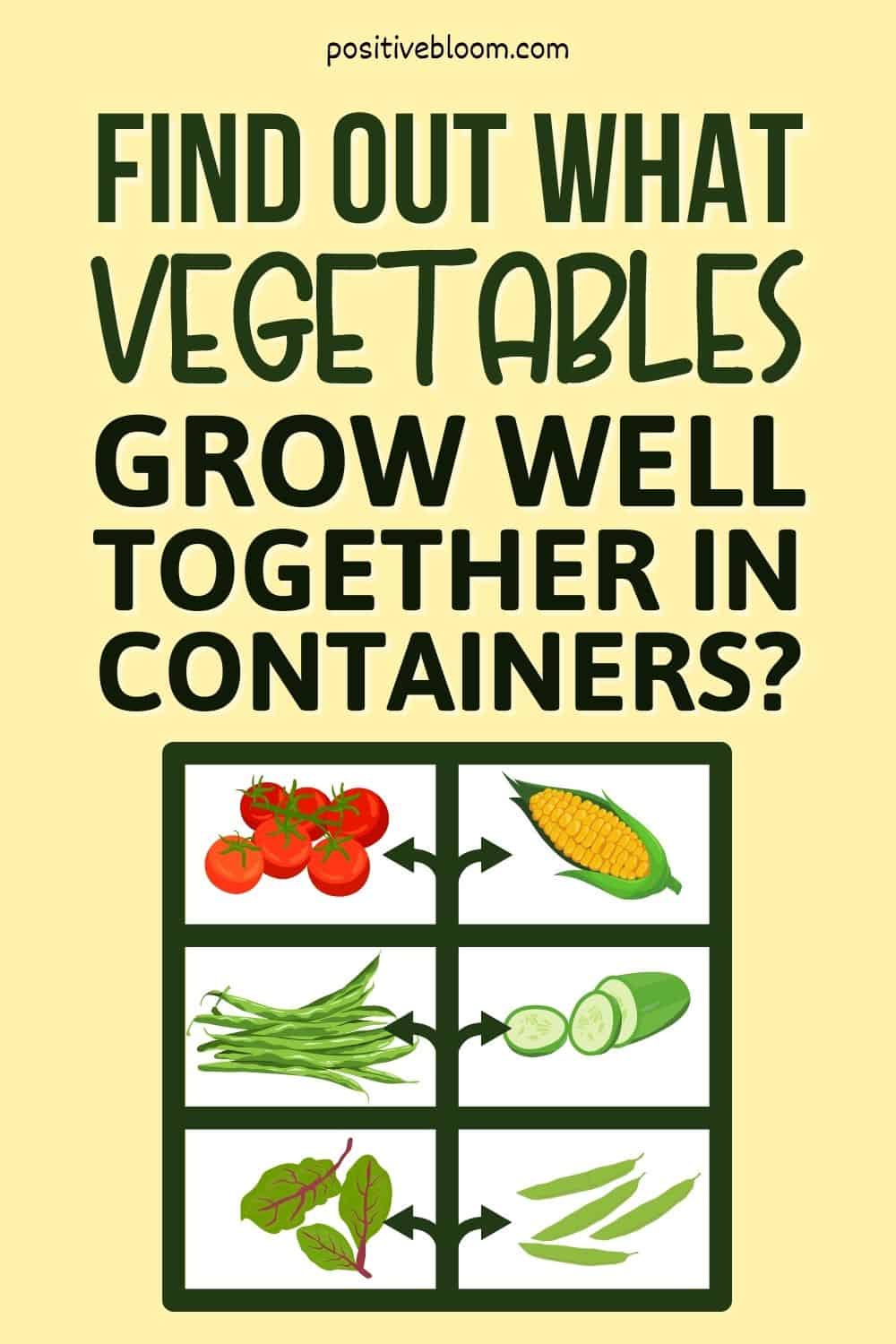Container gardening is very popular nowadays; it is great for limited spaces and doesn’t take too much of your time.
The great thing is that anything can make a suitable container if you ensure high-quality soil and good drainage for what you plant in it.
Additionally, this type of gardening helps you avoid different diseases that commonly affect plants.
You can grow almost any vegetable in a container. Best of all, you can move your container whenever and wherever you want.
The fact is that some plants grow better when they have company, so let’s find out what vegetables grow well together in containers.
What Vegetables Grow Well Together In Containers?
Two (or more) plants can help each other when they grow side by side. Remember, plants are just like humans, and they can make the best out of friendship.
Let’s see some plants that get along well when grown in the same container.
Cucumbers And Beans
Although vining cucumbers are mostly grown in vegetable gardens, bush type cucumbers grow well in containers.
Even though cucumbers (Cucumis sativus) don’t require higher Nitrogen concentrations in the soil, they can benefit from it.
Both bush beans and pole beans are known for their ability to increase Nitrogen in the soil. However, they won’t fix severe Nitrogen deficiency.
Cucumbers don’t require much Nitrogen, however, so beans will help them receive enough.
Cucumbers And Radishes
Cucumbers and radishes (Raphanus sativus) make great companion plants as radishes deter cucumber beetles.
The cucumber beetle transfers bacteria that may infect the vascular system of plants from the Cucurbitaceae family, causing them to wilt. They ‘grab’ the bacterium and pass it to the next plant.
Radishes are also great company for carrots. Carrots need more time to mature than radishes, and when you harvest your radishes the soil will become loose and perfect for carrots.
Onions and leafy greens such as lettuce and spinach also get along well with radishes.
Beets And Onions
Beets (Beta vulgaris) are excellent compost material. During decomposition, beets return micronutrients essential for onion growth, such as iron and manganese, to the soil.
On the other hand, onions (Allium cepa) repel pests such as aphids and snails.
Cabbage, lettuce, leeks, and some herbs such as rosemary also make great onion companions.
Chives And Tomato Plants
Another great combination for companion planting is chives (Allium schoenoprasum) and tomatoes (Solanum lycopersicum).
Chives actually make tomatoes taste better, and are also known to repel aphids and spider mites.
Chives are also great partners for Brassica plants. On top of all that, they repel carrot rust fly, which makes them great company for carrots.
Marigolds And Tomatoes
Marigolds (Tagetes erecta) and tomatoes are perfect partners when grown together in a container.
They have similar growing requirements. Tomatoes are sensitive to root-knot nematodes, and marigolds can kill these predators. Marigolds contain chemicals like alpha-terthienyl that kill pests such as hornworms.
Additionally, marigolds attract beneficial pollinators and don’t grow much; they instead remain small and compact.
However, never plant Mexican marigold plants near beans!
Bush Beans And Eggplants
I mentioned that beans increase Nitrogen concentration in the soil. Eggplants (Solanum melongena) require more Nitrogen than other common plants grown in containers.
Eggplants are susceptible to Colorado potato beetle, a common disease that affects plants from the nightshade family.
However, bush beans repel these pests so they don’t ever return.
That is why bush beans and eggplants are perfect companion plants!
Oregano And Pepper Plants
We already know that oregano makes veggies taste better in cooking.
But is oregano (Origanum vulgare) a good companion? Most herbs are good company for veggies, but one of the best combinations is oregano and pepper plants.
Due to its strong scent and spicy flavor, oregano isn’t very attractive to pests like aphids. Moreover, sap-sucking insects won’t come near this herb, so pepper plants will be completely protected!
This herb also repels cabbage moths, so it’s a good idea to plant it in the same container as Brassicas.
Turnips And Peas
Peas (Pisum sativum) make excellent company for turnips (Brassica rapa subsp. rapa). Just like beans, peas increase the Nitrogen concentration in the soil.
Planting peas and turnips next to each other in a container provides a natural fertilizer and promotes the growth of turnips.
Another great thing about peas is that they grow upwards, which means we harvest the parts above the ground. Turnips, on the other hand, are root crops, so they produce their crops below the surface of the soil.
Other turnip companion plants include basil, borage, chives, and marigolds.
Zucchini And Corn
Corn (Zea mays) has a sturdy stem, which means some vining plants can use the stem as support.
One such plant is zucchini (Cucurbita pepo).
As zucchini vines develop, they climb stalks to improve stability.
Both plants require similar soil, watering schedules, and light, so neither of the plants will be affected if grown together.
Zucchini’s dense foliage creates shade for the soil and makes it unattractive to weeds. The spiky leaves of zucchini plants prevent pests like rodents from snacking on the corn.
Zucchini also make perfect nasturtium companion plants.
Green Beans And Corn
Corns create mild shade, but that doesn’t stop green beans from growing or affect their growth in any way.
The roots of these plants grow in different levels of soil, which means green beans won’t ‘steal’ any nutrients that corn roots need for healthy growth.
Swiss Chard And Beans
Swiss chard and beans get along really well when grown in the same container.
Beans will create shade for swiss chard, but you will harvest swiss chard way before the beans reach their full size.
Chard creates shade for bean seedlings, which protects them from the sun. Also, swiss chard helps the soil retain moisture, and beans really appreciate that.
Pumpkins And Nasturtiums
When I started container gardening, I was somewhat skeptical about growing pumpkins in containers.
But, if you provide them with a large container, pumpkins can actually grow better than when planted in raised beds.
Pumpkins and nasturtiums are great companions.
First, squash bugs are one of the enemies of pumpkin plants. They feed on the leaves and can kill the plant in cases of severe infestation.
Luckily, nasturtiums repel these annoying pests.
What a colorful display in your garden!
Nasturtiums can also act as a trap crop when it comes to squash bugs. In other words, they first attract them and then kill them.
Summer Squash And Dill
Dill and summer squash are great friends. Dill attracts pollinators such as wasps, ladybugs, and lacewings.
These insects feed on squash bugs, so you don’t have to worry about these pests paying a visit to your dill and summer squash.
I have to mention that squash acts as mulch when planted next to beans, which is one more great companion planting combination!
Brussel Sprouts And Garlic
I like brussel sprouts and garlic, especially when combined in a culinary way.
However, these two veggies also do great when planted in the same container.
Garlic and other plants from the Allium family are known for their antifungal properties.
Due to this feature, garlic makes the soil unattractive to pests; in other words, they are a natural repellent. Your brussel sprouts will go through all stages of growth without pest problems.
What Vegetables Should Not Be Grown Near Each Other?
Although it may seem strange, not all vegetable plants are friends. Just like humans, some plants are more competitive and have bigger needs.
For example, some veggies compete for soil and nutrients and eventually win, which leaves their partners without food.
Some plants are very delicate and can be easily affected by their companion plant.
Now, let’s see what vegetables you should avoid planting next to each other!
Tomatoes And Corn
Corn may be very beneficial to some vining plants, but for tomatoes it’s a big NO!
As you may know, the most common pest that affects tomato plants is the tomato fruit worm.
Corn plants attract these pests, which means that corn won’t suffer if a couple of these rascals inhabit them.
For tomatoes, however, these creatures can be lethal.
So why risk it? Never force a friendship, especially in this case!
Asparagus And Garlic
Asparagus should never be planted with any plants from the Allium genus, and this especially applies to garlic.
Asparagus goes through 7 stages of growth, and garlic can have an impact on each of them.
Garlic is a needy plant when it comes to nutrients in the soil. It is also a slow-growing vegetable, which means that the uptake of nutrients lasts a long time.
Once the garlic’s root system is established, it will highly affect the immature and sensitive asparagus roots.
Eventually, garlic will stunt asparagus growth so much that you won’t be able to recognize your plants!
Leafy greens, dill, and strawberries make way better asparagus companion plants.
Fennel And Eggplant
Fennel is a pretty tricky plant. It’s beneficial in that it attracts beneficial insects such as ladybird beetles and tachinid flies.
So it may sound like a good idea to plant fennel as a partner plant.
Unfortunately, that is the worst thing you can do! Fennel affects the growth of other plants. So, fennel may disrupt each growing stage of eggplants, for example.
To clarify, you should plant fennel because of its ability to attract beneficial insects, but plant it far away from other plants, especially in containers.
Cilantro and Thyme
Thyme should never be grown in close proximity to cilantro.
The criteria for this component of companion planting is based on the demands of different plants: certain herbs require more water than others.
Cilantro plants have a shallow root system and thrive in wet soil, so should never be planted next to veggies that prefer well-draining soil.
Pole Beans And Beets
You can plant the same partner plants with both pole beans and bush beans. However, there is one plant you can grow next to bush beans, but is a bad choice for pole beans.
Beets inhibit pole beans growth, and neither will actually benefit if grown together.
On the other hand, beets won’t stunt the growth of bush beans so feel free to plant them next to each other!
What Is Companion Planting?
Companion planting is a technique for producing plants that are complementary to one another.
Some plants deter pests and others attract pollinators. Some plants have the ability to fix nutrient levels in the soil.
Additionally, plants that have sturdy stalks can serve as support for vining plants.
So, companion planting and container gardening are a perfect combination!
Let’s get into details!
The Benefits Of Companion Planting In Container Gardening
All garden plants have some unique features, so why don’t we use them to our advantage?
Let’s take a look at the benefits of companion planting when growing plants in containers.
Shade
Some plants grow taller and bushier than others, which means they can protect the plants that don’t grow well when exposed to the sun.
Additionally, some plants prefer moist soil, so providing them with shade will help the soil retain moisture.
For example, one of the plants that create shade is corn. So, if you grow any leafy greens next to your corn it will protect them from direct sun.
Structural Support
I mentioned that some plants, like corn, have sturdy stems, so they make perfect support for vining plants like zucchini or beans.
But zucchini or beans aren’t the only ones that will benefit if grown alongside corn.
Corn has sturdy stalks, but on windy days they may break! As you may assume, the vines of zucchini or beans act as an anchor for corn plants.
Another great example is cucumbers, which make great sunflower companion plants because they provide structural support.
Pest Repellent
When you grow plants next to each other, they can protect one another from pests that would otherwise harm them.
For example, bush beans repel pests like the Colorado potato beetle, and as eggplants are commonly affected by these pests, bush beans make great companions.
Soil Fix
Companion planting promotes airflow in the soil and increases nutrient levels.
Beans increase Nitrogen concentration in the soil and eggplants require more Nitrogen than other common plants grown in containers.
We can conclude that improving soil quality makes companion planting even more beneficial!
Perfect For Beginners
I was once a beginner in gardening, and I know how challenging it can be!
Container gardening will allow you to easily start over if some of your crops fail.
Fill your container with new potting soil and plant the seeds (you might want to try a different plant this time).
If you are unsure about the seeds, you can start with transplants.
The Best Veggies For A Container Garden
I know what you may be thinking: I mentioned many plants that get along well when grown in containers, so aren’t they all perfect for container gardening?
Yes, that is true, but some plants thrive in containers even better than when planted directly in the ground.
Let’s take a look at a list of plants perfect for vegetable container gardening!
Cucumbers
Cucumbers are a great choice if you want a plant that produces fruit quickly.
The only thing to keep in mind is not to let the fruits become too large or they will taste bitter.
Cucumbers grow best in temperatures ranging from 53 to 59 degrees Fahrenheit. They prefer full sun, so planting them in containers means you can easily move them and control light and temperature levels.
Pay close attention to watering; cucumbers adore water and need moist soil. Choose containers made of either plastic or ceramics as it will aid in water retention.
Salad Greens
A great thing about salad greens is that you can choose from among many varieties that grow well in containers.
Salad greens will regrow if you leave approximately an inch of the plant above the soil level after harvesting.
Make sure the soil is loamy and rich in organic materials. These vegetables are shallow-rooted and grow quickly, so you need to water them more frequently. An improper watering schedule will cause the salad to taste bitter.
Eggplants
If you can’t plant eggplants in your regular vegetable garden, or you don’t have one, you’ll have no choice but to grow them in containers.
Fortunately, they are easy to cultivate and fruitful even when grown in containers.
The containers should have a depth of at least 12 inches and be 12 inches in diameter.
I highly recommend smaller eggplant varieties if you decide to grow eggplants in containers.
Eggplants require nutrient-rich soil, and changing the soil in containers is easier.
Eggplants prefer warm and sunny locations, so planting them in containers means that you can move them easily.
If the weather cools down, you can easily bring them back inside.
Tomatoes
Tomatoes grow well in plastic or ceramic pots, but you can also grow them in grow bags. However, you need to pay close attention to the correct size of grow bag for tomatoes.
The same applies to the container size; the larger the tomato variety, the bigger the container you’ll need. You will need larger containers for varieties such as beefsteak.
The benefit of container gardening is that you can control the conditions for all seedling stages of tomato plants and help them adapt by gradually moving them outside.
Pepper Plants
Another excellent container plant is peppers.
Hot pepper plants like jalapenos grow well in pots. An important thing about peppers in pots is that you should water them at their base and avoid getting the leaves wet.
If you water the leaves, it might cause the sun to focus on a single location and quickly burn them.
It would be ideal if jalapenos could be watered on a regular basis, but this is not the case.
Rainy weather will minimize your jalapenos’ water requirements, while hot and sunny weather will increase it.
As a result, the best option is to build your own watering schedule, taking into account other aspects such as sunlight and humidity.
It’s great to plant peppers in containers because you can control everything and help your peppers flower.
Radishes
Radishes are extremely sensitive to high temperatures, so growing them in container gardens is a great choice as you can change their location easily.
They grow quickly and don’t require much space.
When it comes to radish varieties, you have plenty of choice. Luckily, all varieties grow well in containers.
Potatoes
Potatoes are widely grown plants with numerous cultivars created to withstand the harshest environments.
There is nothing better than fresh potatoes, and even if it takes time to grow them in containers, it’s definitely worth it!
A great thing about growing these plants in containers is that you can control conditions during all the potato growing stages.
Factors That Influence Container Gardening
Although container gardening may seem easy, it won’t be successful if you don’t pay attention to certain things.
Let’s see what factors influence container gardening, and a few gardening tips to improve it!
Type Of Container
Most veggies are generally unconcerned about the sort of container they grow in.
You’ll need to choose a container with good drainage because most plants are susceptible to diseases caused by overwatering.
Clay is porous, so growing plants in clay pots will require more care. Clay pots are also heavy, which makes them difficult to move around.
I recommend looking for a lightweight container for ease of portability.
Furthermore, color plays a significant role in container gardening as dark hues absorb more heat. Hence, the soil becomes too hot and affects the veggies.
Container Size
If you are a beginner, I suggest you start with large containers as they store more soil and decrease the need for watering.
A large container with a depth of 10 inches and a width of 12 inches is perfect.
Veggies such as tomatoes and cucumbers tend to grow taller than other plants, so bigger containers are suitable for the trellis to fit in.
In addition, large containers reduce the risk of supported veggies tipping over.
Another factor that influences the size of the container you use is space. Of course, if you have a small space in which you want to place a container, you’ll need smaller containers like window boxes and smaller plants.
Potting Mix
I suggest using potting mix over regular soil, particularly for containers with good drainage, to maintain proper moisture levels.
Put your potting mix in a container so that it is 2-3 inches from the upper edge to allow for deep watering.
Pro gardening tip: water your potting mix before planting veggies and add materials to improve drainage, such as gravel.
Don’t forget about drainage holes! Make sure your container has some.
Wrapping Up
Container gardening has many benefits and is a great option for beginners.
I like the fact that you can move the containers, which allows you to arrange your vegetables and make your vegetable container garden even prettier.
Now that you know what vegetables grow well together in containers, why don’t you try growing some?
I’m sure you won’t regret it!
Until next time!
Like this post? Share or pin it for later!

